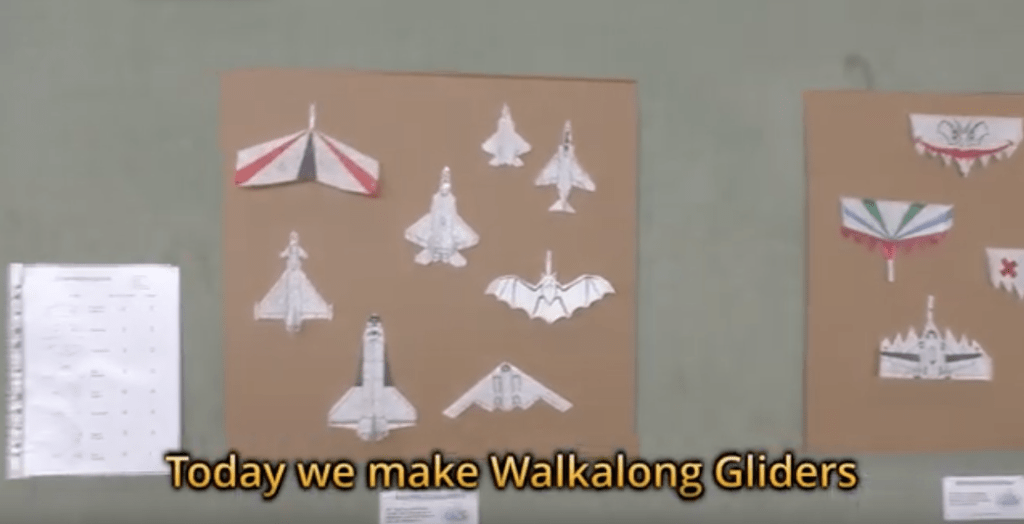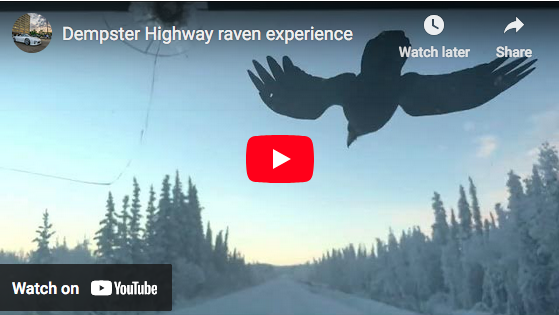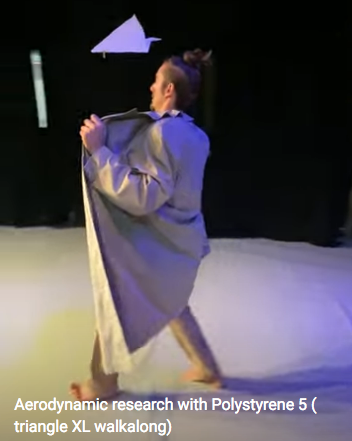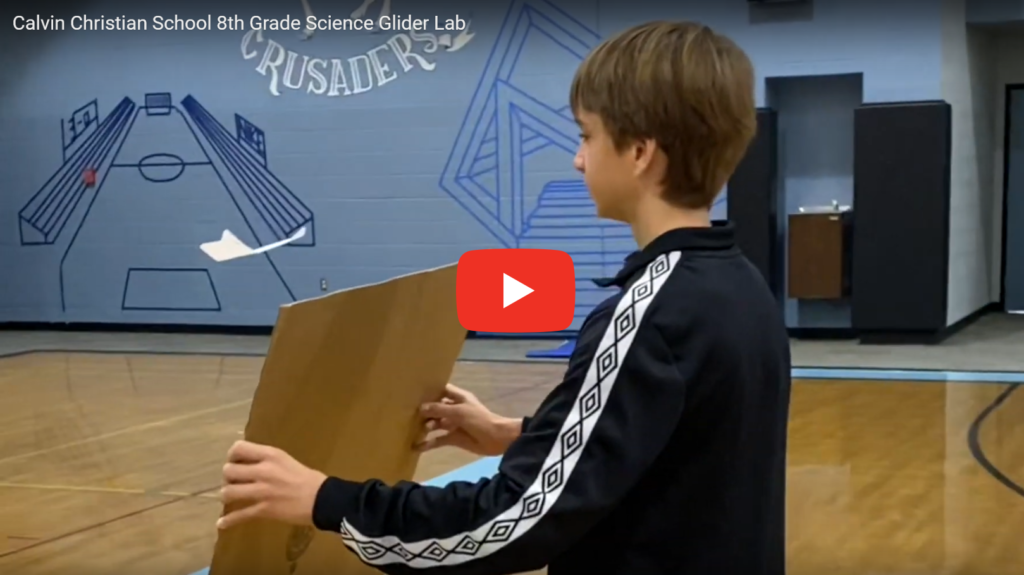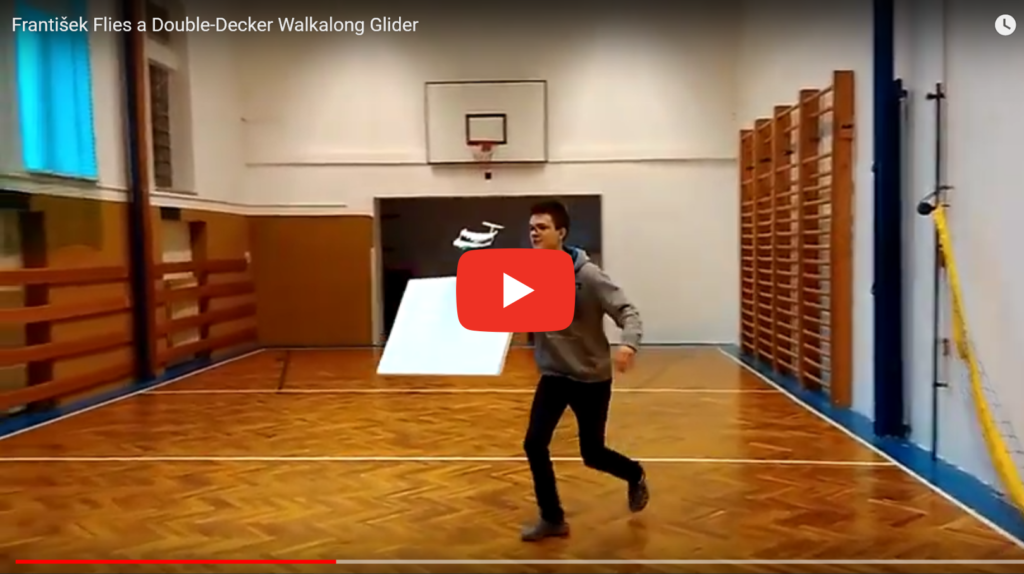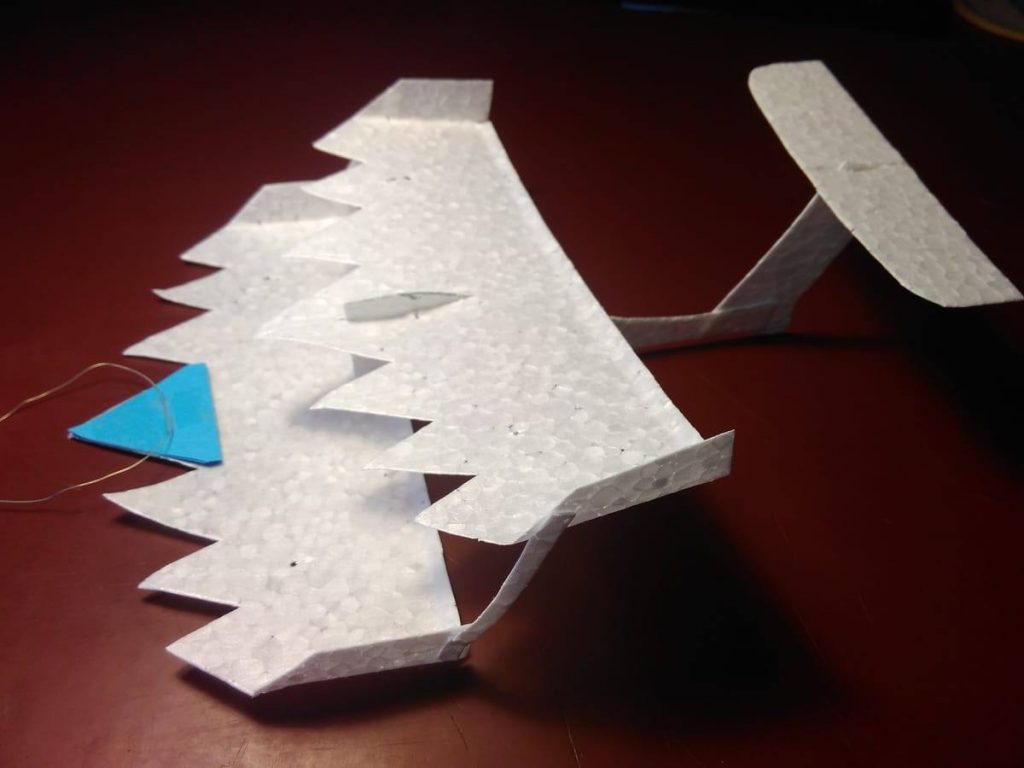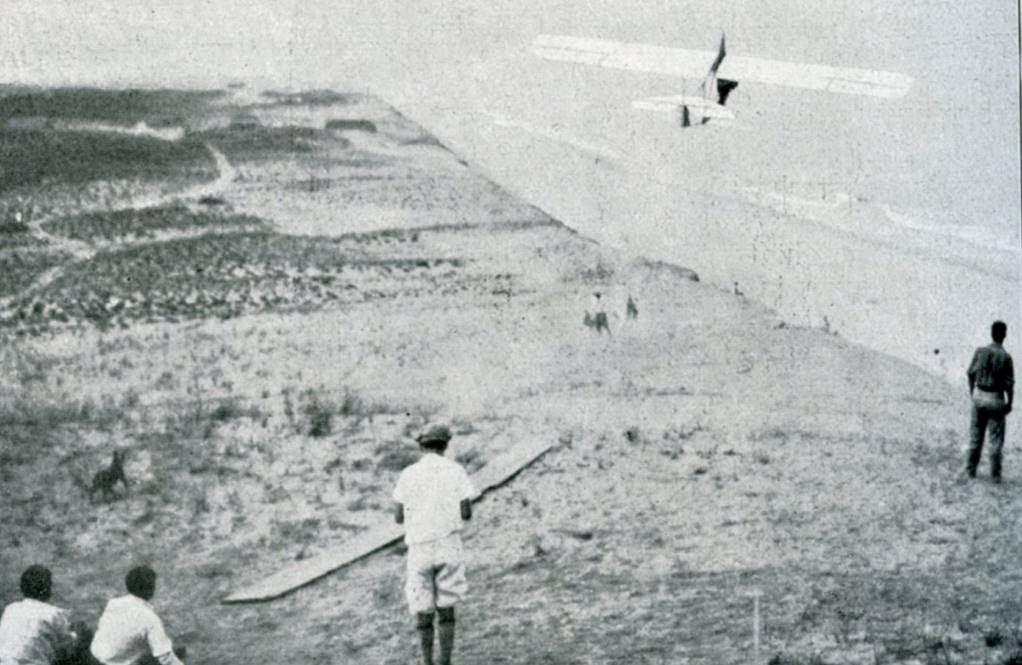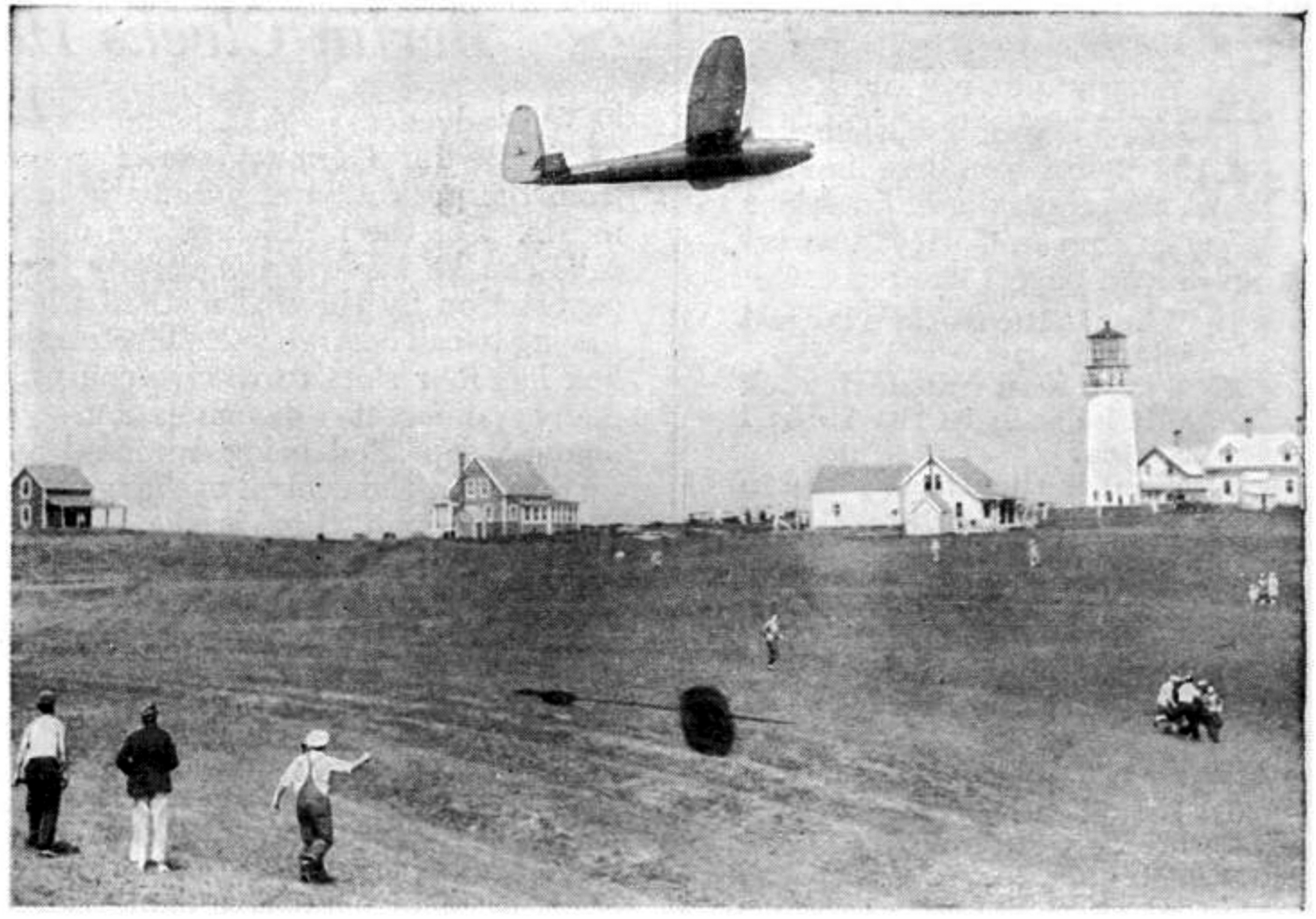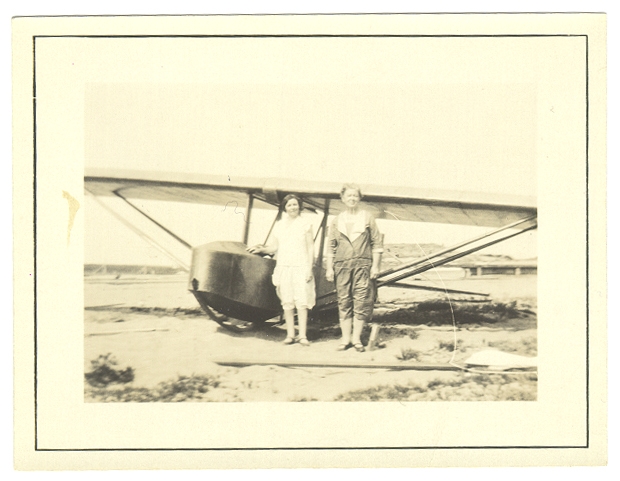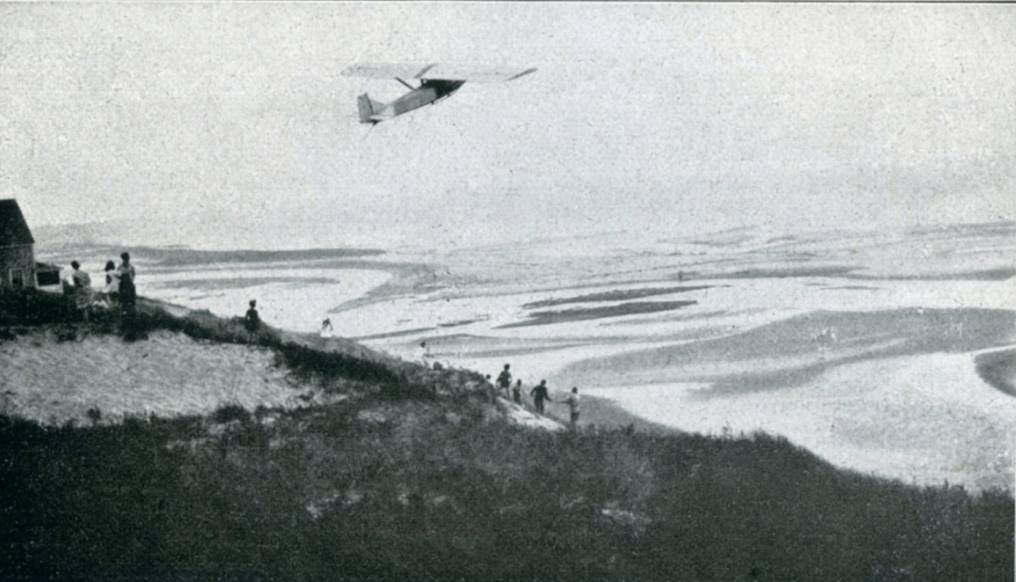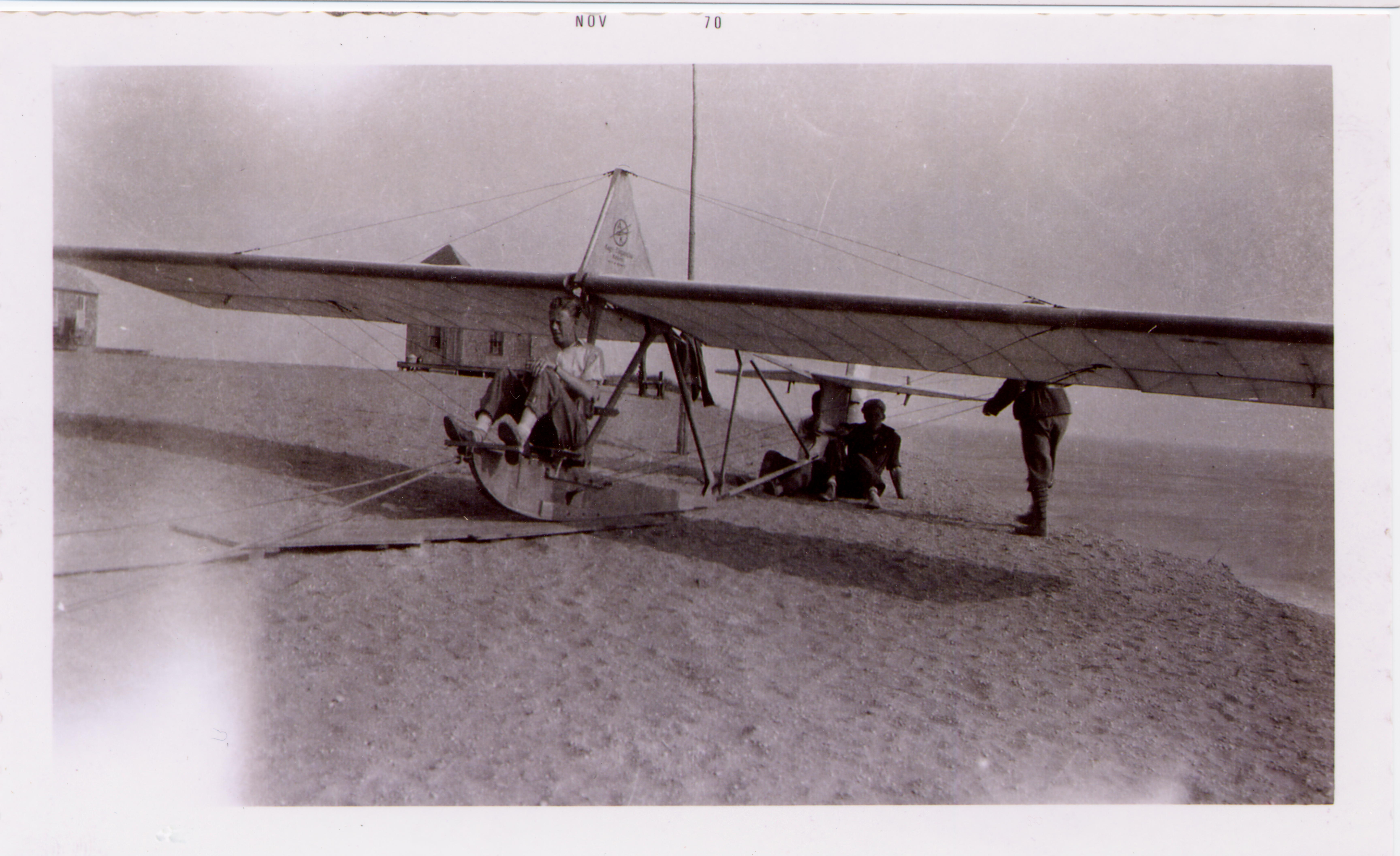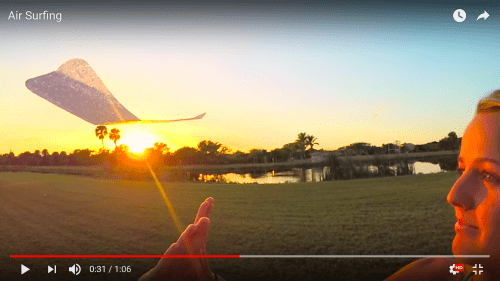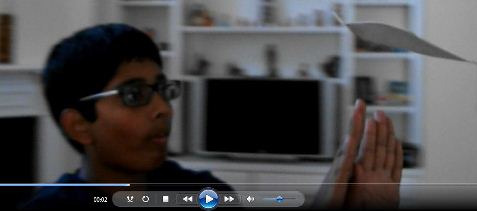Robert Link has been building RC planes from scratch for 15 years. Intrigued with walkalongs, he started building them and organized a walkalong glider class for young people for his local RC Flying Club. About 1:50 in they start in on aircraft carrier landings—fun! You can see more of Robert’s RC designs here
http://www.roberts-r2d2-bau.de/fmbindex.html
Sure, birds can soar on ridge lift (gaining altitude when wind hits mountains and diverts up) and we’ve heard that ravens are smart; but this raven in BC uses the lift from a car.
More about it from the CBC https://www.cbc.ca/news/canada/north/raven-dempster-highway-fly-along-1.6689533 although it seems like a bit of an oxymoron to say “…ride the draft in front…”. Isn’t drafting just in back?
Utka in Italy is flying a classic paper airplane design (though made from EPS) with an overcoat. Walkalong gliders have really taken off with jugglers and the mini-circuses in Europe. Actually, the traditional paper airplane design is harder to fly than the "flying wing" kind but this is so cool!
Mr. Jonathan Beutlich does some seriously good teaching/flying with his 8th grade students in California!
I received this picture and video from František, a young man in the Czech Republic. František cut his own foam, experimented with the Baby Bug and Thompson Jagwing gliders; and he created this elegant, charming biplane from 2 Jagwings. His glider also has a tail, and his video shows very well the challenge. If the updraft of air hits the glider more in the back or the front, then the glider dives or stalls. I have asked František to experiment with holding the board at a less steep angle and see if it is any easier to fly. David Aronstein has created many walkalong glider designs with tails, and in his interview did a great job of explaining the challenges and how to mitigate them. Thomas Buchwald , Mike Thompson and Heinrich Eder have all created cool walkalong glider designs with tails.
KTG 10 and His Little Brother
I really like this video. It appears that this young man hands off the camera to his little brother and then demonstrates formidable flying skill. He reports that he made the front weight from scrap copper wire. I now advise people to start with the Jagwing because the Baby Bug is more complex; but this young person got it right--perhaps an aerospace engineer in the making!
Mich386 from Germany
It's amazing, the variations of walkalong gliders that people around the world come up with. Mich386 sent me this link of how they have fun in Germany. Normally this kind of glider--radio control flaps, but no propeller--would be used for slope soaring . Here they've turned it into, as Phil Rossoni said in the comments, "Drivealong gliding!"
Ashutosh Bhakuni from India
Contrary to what I’d hoped, I rarely get substantial feedback about walkalong gliders; but when I do, it’s precious. Ashutosh Bhakuni has provided the most detailed and helpful feedback—from a beginner learning to make and fly gliders, to best strategies for teaching groups to fly. Based on the insight gained in our discussions, I’ve set about making a new instructional video series about walkalong gliders (a work in progress and will be for months to come).
Our correspondence grew to great friendship. I learned that Ashutosh was volunteering for a youth development group as he attained his degree in computer engineering. Instead joining a lucrative IT company, he ‘downgraded’ himself by getting an MA in social sciences and joined an NGO’s hands-on science program. I admire him so much, and not just for his work bringing hands-on science experiences into schools; Ashutosh has also expanded my awareness of social justice issues and interesting things in the world.
Ashutosh's Facebood post and YouTube channel
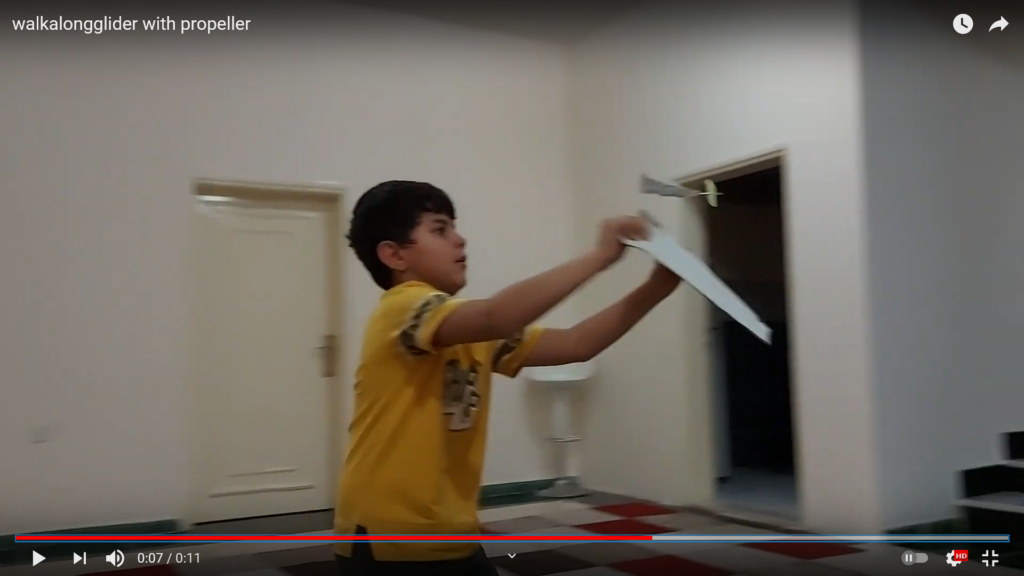 This young man is designing his own walkalong gliders. He recently incorporated Mike Thompson's freewheeling propeller into one.
This young man is designing his own walkalong gliders. He recently incorporated Mike Thompson's freewheeling propeller into one.
Pierre Klein in Paris
Pierre Klein, studying design in Paris, included walkalong gliders in his graduation project. There is a wonderful surprise at 7:10 into the video!
Justin in California
Justin in California said that he got the foam gliders for his 3 boys, but it's clear that he gets as much of a kick out of flying walkalong gliders as his kids! I also like that his video shows that the gliders are slow and maneuverable enough that you can fly them in a house--not just in a school or gym. Justin made and flew one of the paper rotating designs first before getting foam gliders. Paper is free and people who work with that kind of glider first seem to have a really easy time with foam gliders--even if they struggle with the paper ones.
Bob Randall Cape Cod, Massachusetts
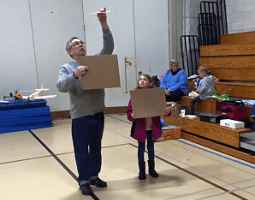
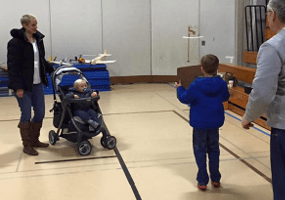
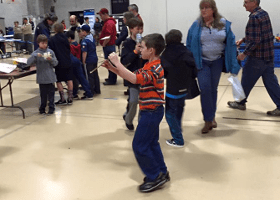
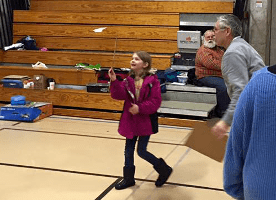
Bob Randall of Cape Cod, Massachusetts, is passionate about flight. He received his first and only trophy for model building in 4th grade 1954. After that soloed glider at age 14 and later built a Cassutt and VariEze homebuilt with his Dad. Because of Gliders and Soaring, low speed aerodynamics have always intrigued him and loves sharing Walkalong Gliders with Kids and Adults. Likewise with Ham Radio it is joy to see kids on the air talking on the radio.
In 2018 I learned that Bob is researching a glider/soaring school that was started by J.C. Penney Jr. (of retail store fame) on Cape Cod from 1928 to 1930 (when the stock market crash ended it). There were German-built gliders, German instructors and about 120 students. Bob laments that he needs a time machine to go back to that amazing time!
Click to see bigger images.
Walkalong Gliders in Thailand
There are dozens of videos of young people flying walkalong gliders in Thailand on YouTube. This one is racing for speed and there are more with obstacle courses. It's cool to see people in the stands cheering the kids on, like a sport.
Mr. Achmad Djafrulah in Indonesia
Mr. Achmad Djafrulah used to be a sailplane pilot and hang glider pilot when he was younger. I think his pilot experience helped with this outdoor flying, which is more difficult than flying through very still air, inside. Achmad said that he would be teaching a group of 15 kids to fly. I wish him the best and hope to see more pictures and video eventually. Thank you for spreading walkalong gliders in Indonesia!




Dr. Jerome Noir
For several years Dr. Jérõme Noir has been reinforcing theory in his Fluid Dynamics course with hands-on activities, including walkalong gliders. He and his students at the ETH Zurich University Institut fur Geophysik in Switzerland made a really fun video of their flying.
“Fluid” and “liquid” are often used interchangeably, but in scientific terminology “fluid” actually applies to both liquids and gases.
And here are the illustrations that Dr. Noir used for a PhD retreat lecture in Germany. Some are quite technical, but at the end there are some stunning pictures of tip vortices/downdraft.
It’s wonderful to connect with such an inspired educator at the university level, and I know from correspondence that Jérõme also takes the time and effort to present hands-on science activities in primary schools in Switzerland. Thank you Dr. Noir!
Brian Reed
Brian Reed created some cool flow analysis simulations for the Baby Bug and the board that deflects the air upward. On the glider simulation, the vortices at the tips—caused by the lower pressure on top of the wing-- really stand out.
I like the board simulation just as much. Anybody who has seen what happens when a glider goes over the top (it’s quite dramatic, head over heels) will appreciate being able to visualize the crazy turbulence behind the board.
Brian has been flying RC planes and helicopters for many years—and recently, walkalong gliders. He is from our home state of Pennsylvania but now lives in Illinois working for a nuclear and plasma physics company designing particle accelerators and specialty, high voltage power supplies for the semiconductor manufacturing industry. Thanks for the simulations, Brian!
I was curious about what effect changing the "angle of attack" of the glider would have. Brian simulated that, too. At the steep angles you can see the flow separation, turbulence that causes stalling. For comparison, check out these wings with various cambers and angles in a wind tunnel with smoke lines.
Dr. Tim Swait
Dr. Tim Swait with the University of Sheffield Advanced Manufacturing Research Centre with Boeing, is also a keen hang glider pilot with several hundred hours logged. Hang glider pilots use "ridge lift" to stay in the air for hours; and walkalong gliders use the same principle to stay aloft. So Dr. Swait participated in the 150th anniversary of the Royal Aeronautical Society with a very hands-on approach: getting next generation of pilots flying with walkalong gliders.
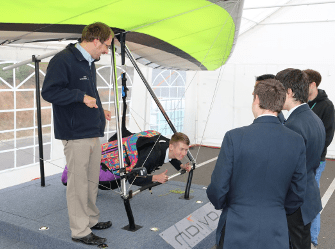
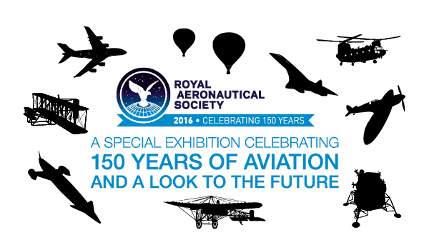
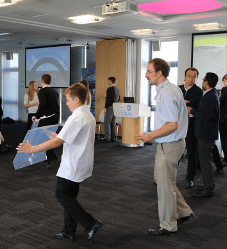
An Update from Dr. Swait (August 2018)
Dr. Tim Swait just sent this video of Korean students beginning to fly walkalong gliders.
He wrote:
Slater, still getting lots of use from your walkalong gliders! Here's a group of Korean students we gave them to. I find that it works well if you want to introduce a competitive element to run a relay race. Split the group into teams, every person has their own glider but one board per team. The board then acts like the relay baton that they pass on at the end of the room. If people want to be competitive then they can add extra weight to increase the wing loading and make the glider fly faster! It was interesting to do a comparison between a glider trimmed for min sink rate (minimum possible amount of weight as far forwards as possible, min possible washout), one trimmed for max glide (a little more weight but not so far forwards to maintain a slightly rearwards CG position still with min washout) and one trimmed for racing (much more weight and max washout), not very efficient but very stable and if you can run fast enough to keep up with it then you'll get across the room most quickly! --Tim
The 2017 International Physics Tournament
The 2017 International Physics Tournament held in Sweden featured walkalong gliders as one of problems that university students had to solve with combination of experimental and theoretical approaches. The focus was on hands-only levitation, which is advanced. Thanks to Sebastian Fava from the Italian team for letting me know. He and Thomas Gustafsson of one of the Swedish teams have kindly shared their PP presentations, each with interesting technical investigation.
Thomas' Power Point
Sebastian's Power Point


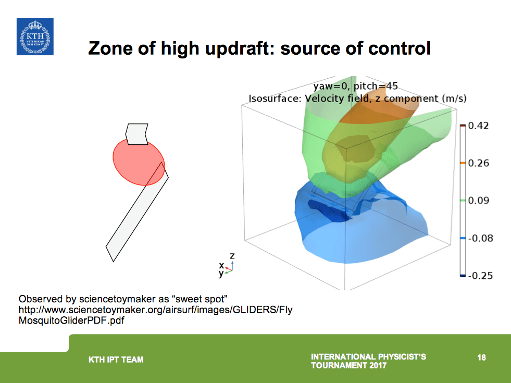
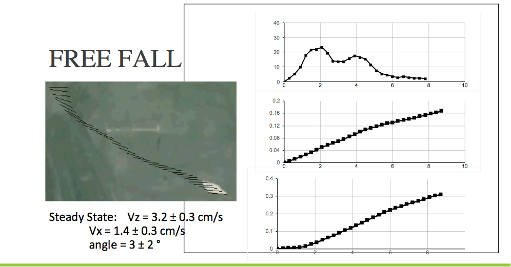
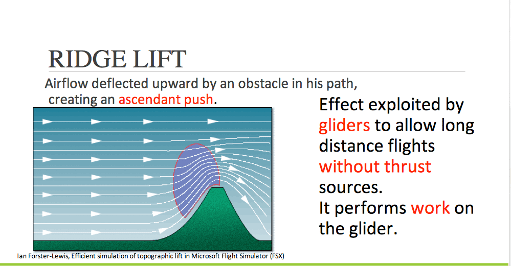
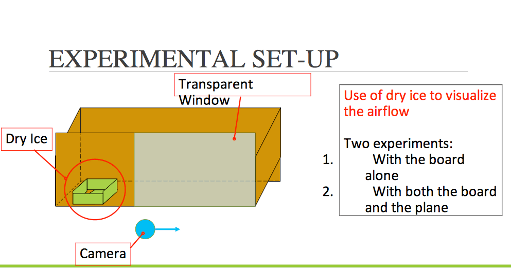
Jacquelynn Danek The Reading Public Museum
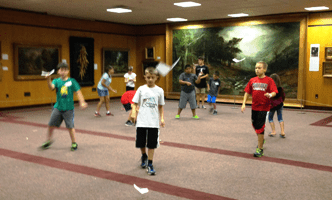
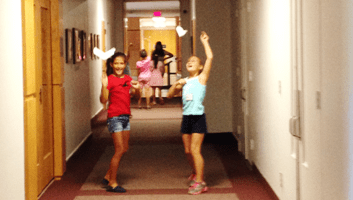
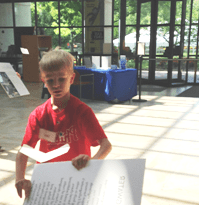
Jacquelynn Danek brought walkalong gliders to the Reading Public Museum. Some museums have aggressive ventilation systems that cause turbulence, but Jaq scouted out for calm space ahead of time. With a group of 20 students (some as young as second grade), a limited amount of time and because it was her first time teaching the concept, she opted to make the gliders ahead of time. Under different circumstances in the future she said that she might have the kids make them. Knowing that the gliders are very delicate, she went with the "pet butterfly" approach and had only 2 broken "butterflies". They started in a circle, bending the wires checking the folds and covering troubleshooting. They tested and adjusted the glide, with most kids getting it on their own. Then Jaq showed them how to use the board and air-surf. Splitting into 3 groups, some had success right away, some got the hang of it with practice, and some were content with it just gliding. Jaq said that they had the gliders out at the parent show at the end of the week and everybody loved them.
Congratulations to a brilliant educator who took on a challenging project with a young group of kids! More about teaching groups to fly walkalongs here.
Walkalong Gliding in Japan
I always caution people to be prepared before trying walkalong gliding with a group. There needs to be someone in charge who knows how to fly themselves; calm air and emphatic cautions to handle the gliders very gently. So when people do all of that, the results are spectacular! This was their first time flying walkalong gliders at the USUI GAKUEN I'm ENGLISH SCHOOL summer English class (it involved science, too). Thanks to Carl for the footage. Also a homage to Mr. Mitsuhiro Nagamatsu, who pioneered very thin foam gliders of whimsical designs.
Yu Peng Canada
Although my main focus is teaching young people to fly, walkalong gliders are fun for older folks too. Also, check out the other cool science projects on Yu Peng's YT channel: electrostatic motors and flight, home-made speakers, aluminum batteries and more!
Pablo Betancur Colombia
Pablo Betancur is a dedicated teacher in Colombia. He sent this video of his students flying many different walkalong glider designs!
Sr. Betancur también creó tutoriales en español para hacer planeadores. Verlos también en su canal de YouTube.
John Biegun
John Biegun is the science teacher I wish I’d had. And the students in his science club really get into the hands-on projects. Here’s a great series of videos showing his students progressing: paper Tumblewings, Jagwing, Baby Bug and culminating with the giant Mama Bugs. Some of the kids built their gliders so well and became so skilled that they can fly with only hands or head! Great club, great teacher!
Check out John's Science Club pages. From unworldly hovering static creatures to rockets to giant bubbles , just look at the cool things his students are making! Here is John's YouTube Channel.
Walkalong Gliders Among French Artists
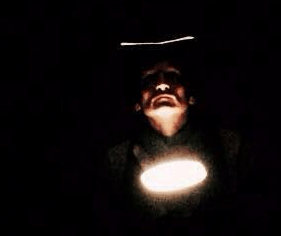
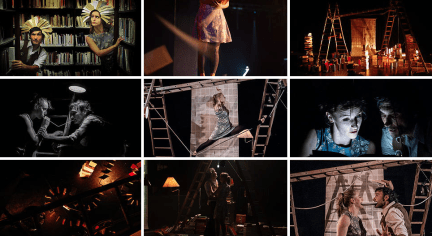
To say that Fabrice Dominici is a juggler and performance and circus artist hardly begins to describe him. He juggles things like boomerangs and paper airplanes! Fabrice is using foam walkalong gliders in a larger work intended to change the way we look at books. At first they use a book to divert the air and levitate the glider, switching back and forth among themselves. In the end they use their heads instead of the book to levitate the glider, with a desk lamp for illumination--which strikes me as an elegant metaphor! Below is a short video that Fabrice sent to me.
Walkalong Gliders in India
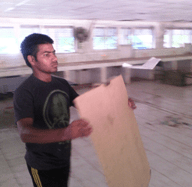
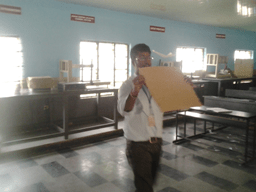
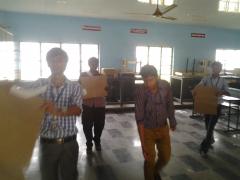
Bhaskar Verma is an undergraduate student in Tamil Nadu, India. He wanted to learn to fly walkalong gliders, then teach his friends. Everyone has trouble maintaining altitude at first, and I suggested that he keep the top of the board very close to the glider. That worked! Then he found a room where the air was still enough and taught his friends how to fly. The last I heard, he was going to work around his class schedule and teach students at another school. Bhaskar Verma once said that he was "not a teacher", but I think that he is a very good teacher.
Here is a mpg video of flying.
GrandadIsAnOldman England
GrandadIsAnOldman is the most prolific YouTuber of making high quality science projects. Here he is flying a walkalong glider.
Damien Leroy and Sophia
Damien Leroy is an extreme kite board champion and knows a thing or two about flying. He made this video of flying a Mama Bug (hands-only) with his friend Sophia. I also think there was some residual heat in the ground, creating some thermal lift.
Check out Damo's other amazing work.
Norm Rubin Tronto Canada
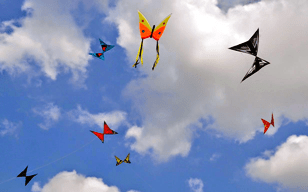


Norm Rubin IS struck by the total non-convergence (so far) of walkalong gliders and indoor glider-kites. The objects of the two seem virtually identical -- controlled indoor gliding, as slow and efficient as possible. Yet the materials and the technologies have been completely divergent, at least so far. Perhaps it's time for cross pollination between kite and along pilots.
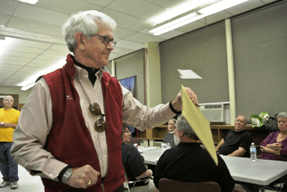
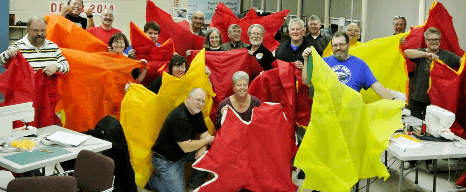
Above, Norm is showing his fellow Toronto Kite Flyers club members how to surf of a wave of air. And what amazing, beautiful kites! Thanks to Carlos Simoes for pictures.
Lil-home-school-mama, MacGyver and Mini Mama
"Lil-home-school-mama" collaborates with her kids "MacGyver" and "Mini Mama" to share their amazing learning adventures with the world. They were kind enough to share feedback about the robot hand project with me, so I asked them to have a go with "walkalong gliders". They did great work, as always. In my latest correspondence with Lilhomeschoolmama she said,
“ Even hubby got in on the action, lol!
Katie from Florida
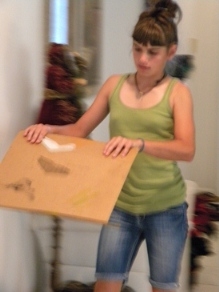
Katie in Florida not only mastered walkalong gliders using the foam I sent, she created a science fair project with the angle of board tilt as the variable. If you want to see the best example of how to use the scientific method and how to present your results--thorough and still clear--then click to see Katie's write-up.
Diego from Mexico
Diego from Mexico sent me some great video feedback about the putt putt boat, another project. Also, I saw on his YouTube channel some really interesting kite vehicle videos. I asked him to test foam gliders. I like the way he involves his family in projects. Now Diego is hot-wire cutting his own foam powered by a car battery, too. Here is more about cutting thin foam.
Nick and Jonathon in Atlanta, Georgia
Nick and his buddy Jonathon in Atlanta, Georgia..." love to solve anything that looks impossible." They were searching for the perfect paper airplane when they came across one of the sciencetoymaker videos about foam gliders. They didn't even have nichrome wire but found a substitute (I hear that thin metal guitar strings or fish line can work) and made a foam hot-wire slicer with an AC/DC adapter. And soon they were flying.
James Upham Resurgo Place Moncton, New Brunswick Canada
Another correspondent from the Great White North--James Upham, at a Science Centre/Museum called Resurgo Place--has a funny T-wing story. "One story I should tell you: we had an air show in my community (Moncton, New Brunswick) this summer; and, as a part of that, we had an opportunity to have pilots from the Canadian Air Force Demonstration team (called the Snowbirds) come in and interact with kids in our Transportation Discovery Centre. As a part of this program, we decided to build tumblewing gliders, so the kids and the pilots could fly together. By the time the Snowbird pilots got here, some of the kids had gotten pretty good at flying their tumblewings, so you had this situation where some kids would be flying figure eights around the room, while some of the best pilots in Canada were lurching around trying to figure out how to control the things! At one point a little boy of about 6 tapped one of them on the arm and said "don't worry, I'll show you how to do it"! I nearly busted a gut."
Mr. Anant Narayanan Goa, India
Mr. Anant Narayanan is bringing walkalong flight (and flying airplane models) to people in India. He has designed a delta wing walkalong, seen in the embedded video, and has provided instructions--even a template. See it here.
David Elias
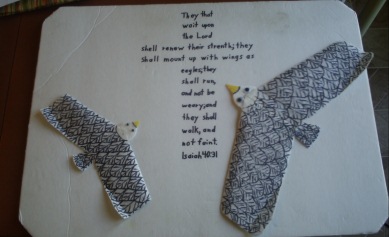
David Elias made these bird gliders with a church group. He said that he used weights as eyes and the tail allows for some adjustment. Beautiful feather pattern. There are more examples of gliders that look like birds, insects, even sea creatures here.
Wilfred van Norel The Netherlands
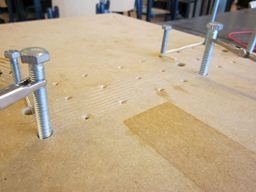
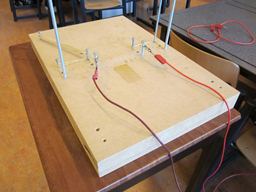
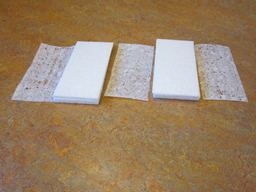
Wilfred van Norel, a teacher in The Netherlands, is showing students how to air surf. He has started cutting foam with the new design that uses screw threads instead of shims to set the thickness--including multiple cuts. Wilfred just discovered that even in the Netherlands the foam from seafood is discarded, so it's available for free. I think he will like the seafood packaging foam. It might be a little stronger and have fewer holes in thin slices.
A.J. from Kansas
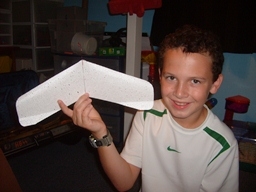
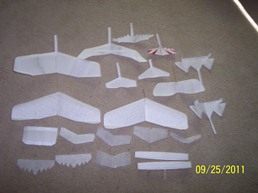
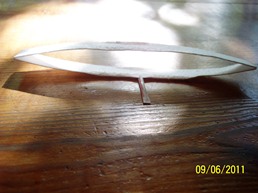
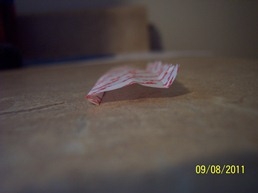
A young person in , A.J., exemplifies what I hope to see more of around the world. A.J. not only built and learned how to fly foam gliders, but now he comes up with his own imaginative designs. Picture1: AJ with a Mama Bug he built. Picture 2: AJ's air fleet. Picture 3: A Big Mouth T wing that AJ--with a few twists and some straw weight--tuned into a biplane glider. Picture 4: a walkalong glider AJ created from a gum wrapper. He reports that Stride gum wrappers work best. Click on to see larger pictures.
Bill Kuhl Ideas-Inspire.com
Bill Kuhl (pronounced "cool") is another great science educator, friend and the driving force behind Ideas-Inspire.com, one of the best science project resources in the world. He flew a Baby Bug (formerly called Mosquito) glider outside after sunset, when the air was still. And when he flew over black pavement that was still warm from the sun--thermal soaring!
Dr. Makarius Tahim
Dr. Makarius Tahim, a Physices Professor, is not content to just dwell in the "ivory tower". He supplements his teaching with interesting curiositie., Then his students go to local high schools to help teach and establish a bridge to higher education. I like the way this video progresses. People get better at air surfing by the end.
Jonathan Beutlich's science club students
Paper Tumblewings aren't foam gliders, but I think everyone contemplating foam gliders should try T-wings first. They are easy and fast to build, using only phone book paper or newspaper. Tumblewings might be a little more difficult to launch and fly. but that makes them all the better practice for foam gliders. Jonathan Beutlich's science club students at the Calvin Christian School in California built and flew Big Mouth Tumblewings (instructions here) . Jonathan tells me they are looking forward to foam gliders. A longer version is here.
Jonathan Amparo in Thailand
Jonathan Amparo is a Philipino teacher at an international school in Thailand. He is experimenting with all sorts of hands-on science projects, including this triplane walkalong glider. It reminds me of Thomas Buchwald's student Jonas' biplane project. Then Jonathan added still more wings!
Audrey from Kansas
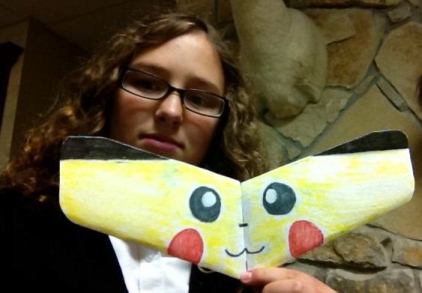
Also from Kansas is Audrey, who colored her Baby Bug. Does that resemble a certain Pokemon? Audrey reports that she had to readjust the glider after decorating it. Now she's starting to hot-wire cut her own foam. I'm hoping she'll create some videos soon. Half of my students are girls and they build and fly walkalong gliders as well or better than the boys (see them in aerial combat here) so I'm puzzled that more girls aren't sending feedback. Go Audrey!
Michele in Italy
Michele in Italy made a jagwing flight video, buzzing his parents who are trying to watch a soccer game.
Abhinav in Texas
Abhinav is a young person in Texas who provided helpful feedback about the foam air surfing kit. He has shown his friends, teachers and his 8 year old sister how to fly. If you click on the picture above, it will play an AVI file of him flying with only his hands. And he just made his own hot-wire cutter to slice out his own thin slices of foam. It's so encouraing to see these young people taking up and teaching walkalong flight!
Nyle Steiner in Utah
Nyle Steiner is an inventor, musician and great friend who lives in Utah. He first contacted me to show me how to electrostatically levitate common things around the house. Not walkalong gliding but very cool. I've learned from his method of investigating the science behind several projects. Nyle has a wonderful website full of DIY science projects. above you can see grandfather Nyle and two granddaughters flying outside (though be cautioned that it's often too windy to fly outside).
Ralph Hughes and His Cub Scouts
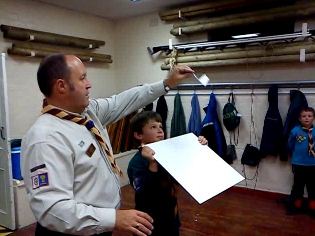
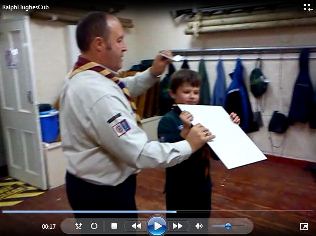
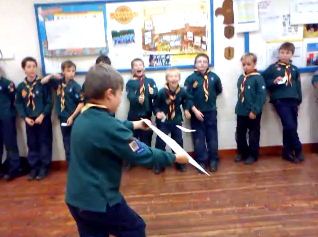
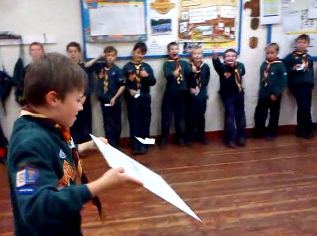
Here's a terrific video sent to me by Ralph Hughes, of his Cub Scouts learning to fly in England. In just a few seconds it has everything: the challenge and awkwardness of learning--particularly launching-- a helping hand and triumph as fellow scouts cheer on the pilot! If the Youtube video is blocked clicking on the here is an 8MB 3GPP video file of the same.
Ralph Hughes sent such terrific feedback about another sciencetoymaker project, the periscope, that I asked him to test the foam glider kit. Soon he was designing his own foam cutter.
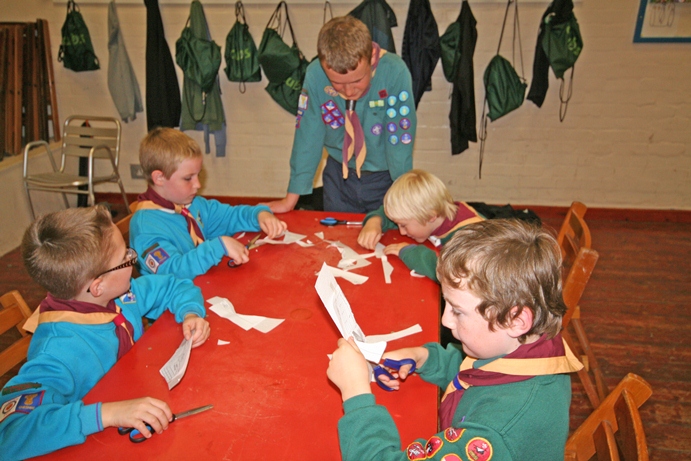
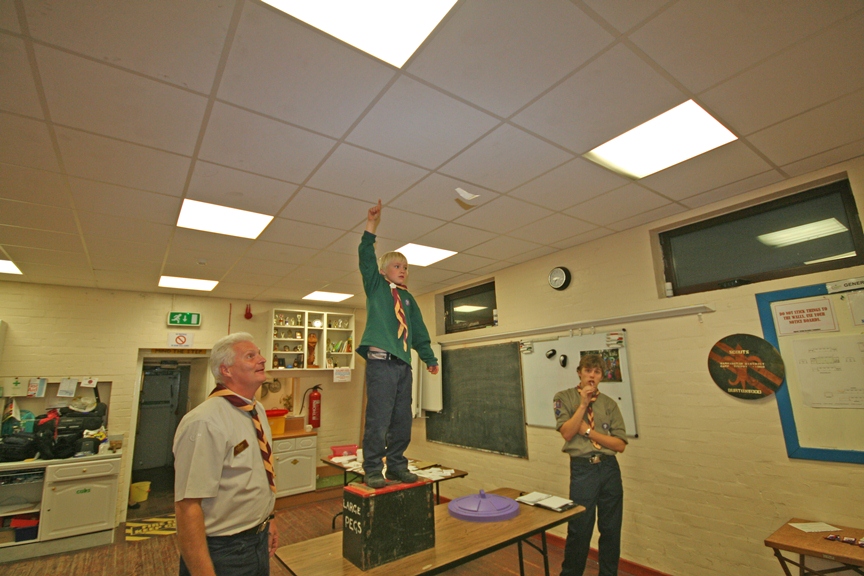
Soon he was designing his own foam cutter.
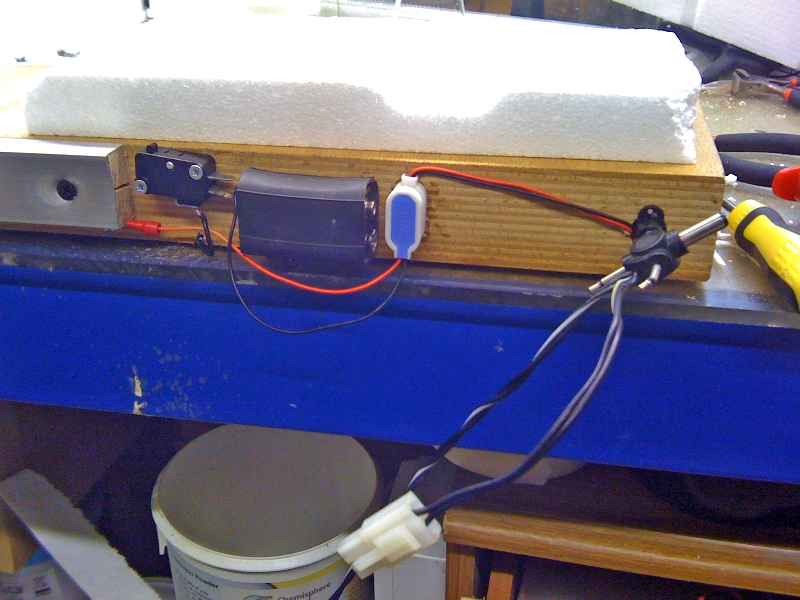
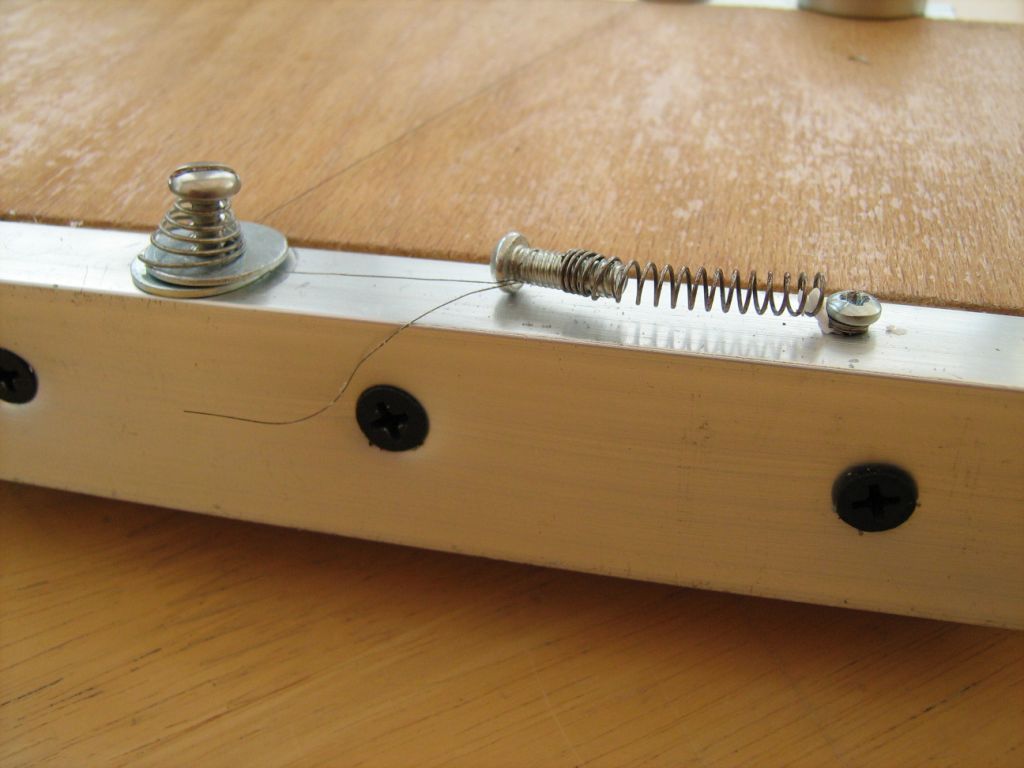
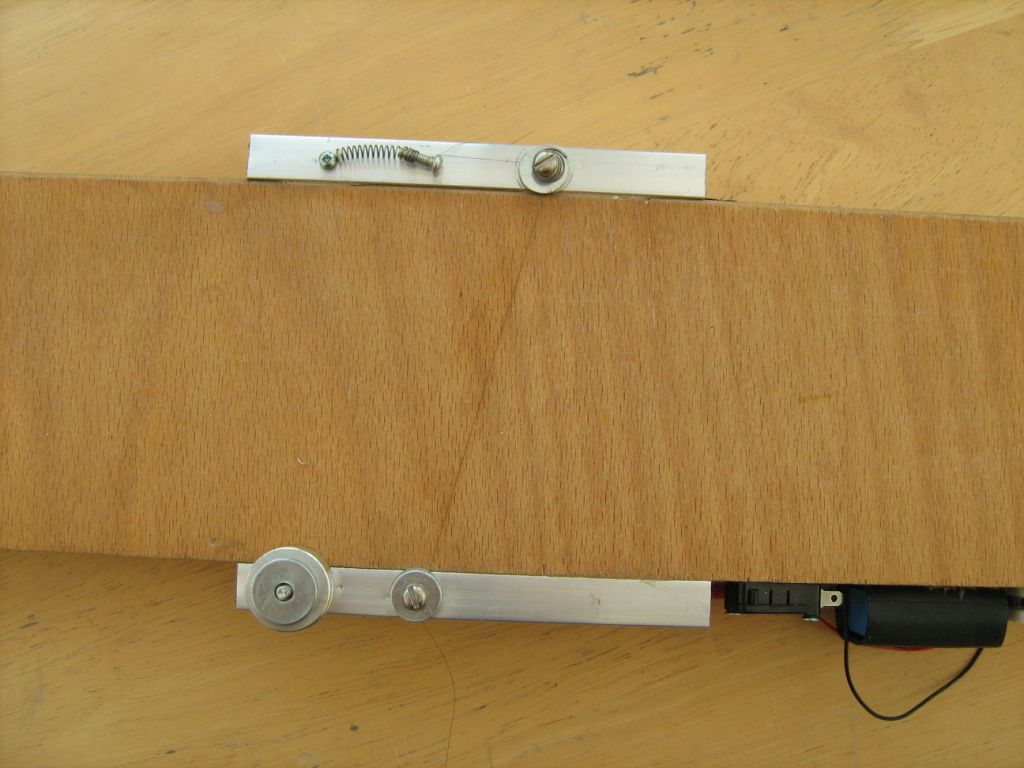
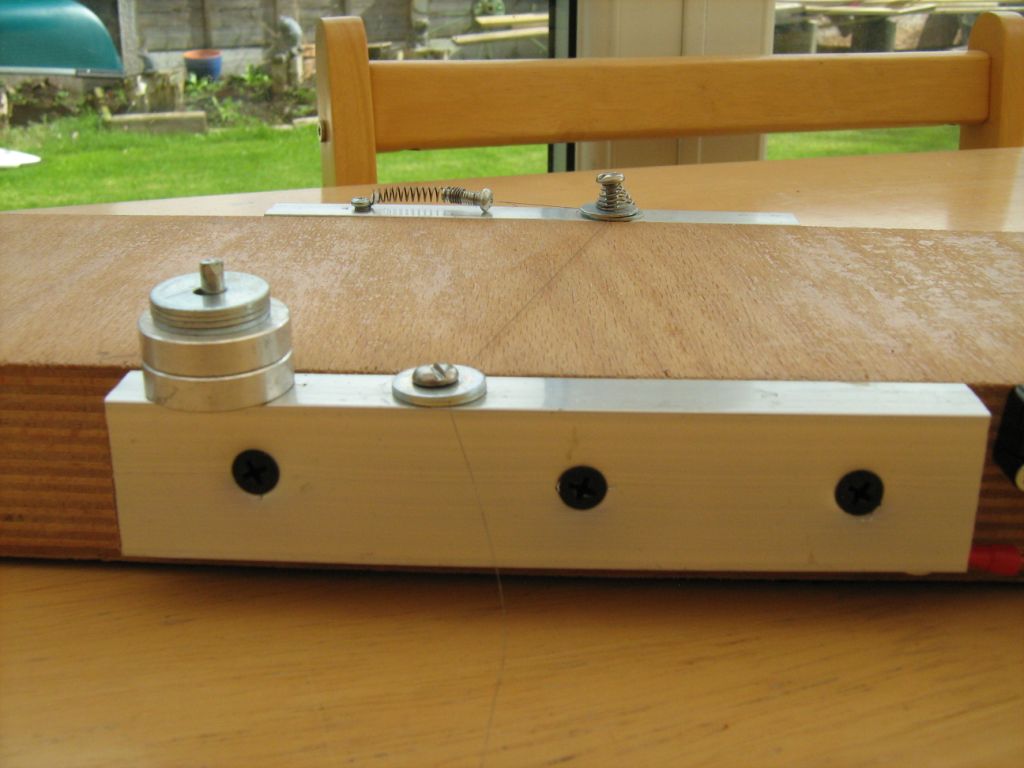
Ralph reports he can power it with either a 9 volt battery or 12 volot, 400ma adapter. He attached a micro switch on the side so the wire is only energised when needed, which reminds me of a kind of switch in an industrial application that could be activated by the foam directly. He said the wire is a single strand from a fishing trace, he burned off the outer nylon with a match. The washers determine the wire height, then he shims underneath with paper until he gets exactly the right thickness. Interesting spring tensioner (when the wire heats it expands) and wire attachment system.
David Williamson in England
David Williamson is a friend in England who invents all sorts of whimsical creations. Here he is cutting some foam, test-gliding and expertly flying in circles in a room (while his niece expertly operates the camera).
Thomas Buchwald in Germany
Thomas Buchwald is a "Technik" teacher of students in grades 6 to 10 in Germany. His glider creatures are so imaginative that he has his own page, Buchwald Bionics.
Michael Thompson
Hurray! Michael Thompson is now putting his work on YouTube. Mike is no less than the inventor of the Jagwing and he got us going with very thin foam for walkalong gliders. He is the only one I know who does not hotwire cut foam, using instead a band saw and—lately—a deli slicer! Mike is truly a master engineer and builder. I’ve seen him fly a walkalong glider that tows another glider. And check out his paper propellers! Read more about Michael Thompson.

